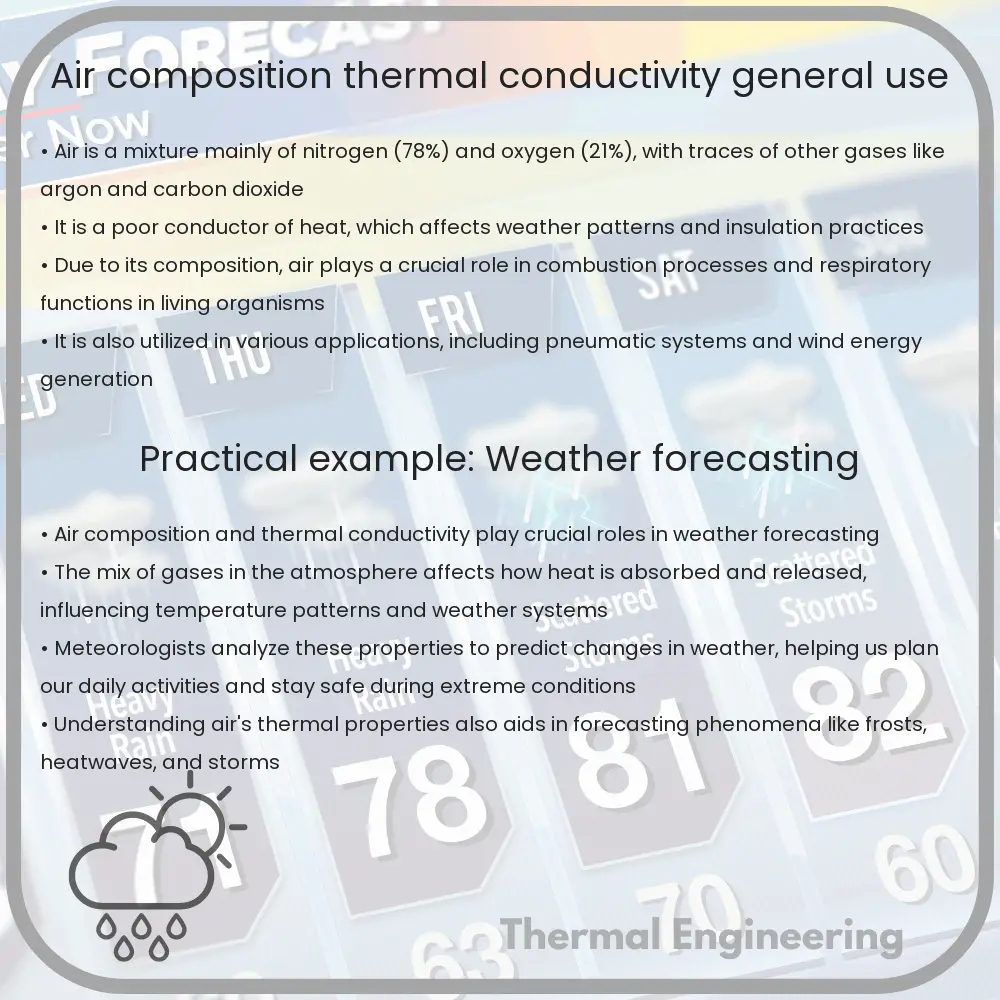Learn about air’s composition, thermal conductivity, and its diverse applications in fields like engineering and technology.

Air: Composition, Thermal Conductivity, and General Uses
Air is a mixture of gases that forms the Earth’s atmosphere and is vital for all known forms of life. Understanding its composition, thermal properties, and various applications can provide insight into many aspects of environmental science, engineering, and technology.
Composition of Air
The air we breathe is mainly composed of:
- Nitrogen (N2) – approximately 78%
- Oxygen (O2) – about 21%
- Argon (Ar) – around 0.9%
- Carbon dioxide (CO2) and other gases – about 0.1%
Trace amounts of other gases such as neon, helium, methane, krypton, and hydrogen are also present.
Thermal Conductivity of Air
Thermal conductivity is a material’s ability to conduct heat. In the case of air, its thermal conductivity is relatively low compared to other materials like metals, which is why air is considered a good insulator. The thermal conductivity of air at room temperature (25°C) is approximately 0.0257 W/m*K (watts per meter kelvin).
The thermal conductivity of air can vary depending on temperature and humidity. Warm air tends to have higher thermal conductivity than cold air because the faster-moving molecules when heated transfer energy more efficiently.
General Uses of Air
Air has numerous applications across different fields of engineering and technology. Some of the most prevalent uses include:
- HVAC Systems: Heating, ventilation, and air conditioning (HVAC) systems use air as a transfer medium to regulate and maintain indoor air quality and temperature.
- Pneumatics: Air is used in pneumatics to transmit energy in industrial machines. Compressed air can power pneumatic tools, actuators, and other devices.
- Combustion Processes: Oxygen in air is essential for combustion in engines and power plants, providing the necessary oxidizer for fuel combustion.
- Aerodynamics: The study and design of objects moving through air is crucial in areas such as automotive and aerospace engineering.
- Weather Forecasting: Understanding air properties like pressure, temperature, and humidity is fundamental for predicting weather conditions.
- Sound Transmission: Air acts as a medium for the propagation of sound waves, which has implications in acoustics and the design of audio equipment.
The versatility and necessity of air within the natural environment and technological applications make it one of the most crucial components of life on Earth and a continuous area of study within environmental science and engineering fields.